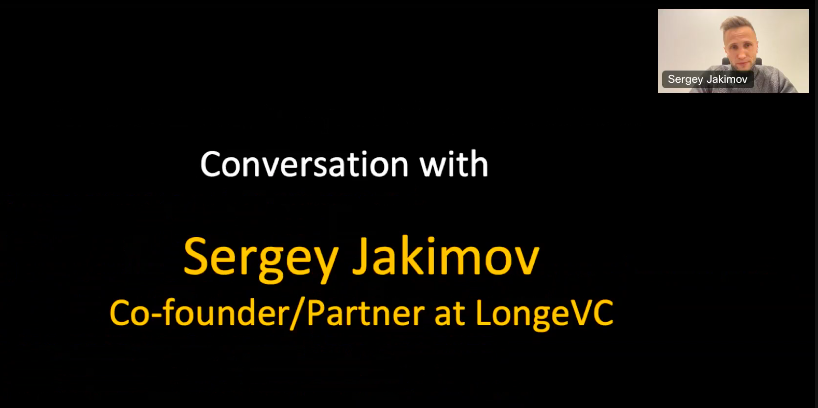1Mby1M Virtual Accelerator Investor Forum: With Heather Hiles, Founder and Managing Partner at Imminent Equity (Part 5)
Heather Hiles: The problem with community colleges is, even after you have AA and even after Bachelor, they don’t get themselves hired. They don’t find themselves having industry capabilities. One can earn $100,000 being a Salesforce Administrator. I can teach you in probably four months. You can’t learn that at a community college. You could get an AA degree, but you still don’t have a way to earn a good living.
Sramana Mitra: But that’s my point. You can learn Salesforce Administration through Udemy.
>>>Featured Videos
Catching Up On Readings: Future of Post Purchase Experience
This report from CB Insights explores the evolution of e-commerce and the future of the post-purchase experience, from automated logistics to AI-powered virtual agents and beyond.
>>>1Mby1M Virtual Accelerator Investor Forum: With Heather Hiles, Founder and Managing Partner at Imminent Equity (Part 4)
Sramana Mitra: One of the reasons why we got attracted to Udemy as a platform to work with is because of the reach and democratization. There is no barrier to entry. Has Udemy made an impact in the startup ecosystem?
Heather Hiles: It has. It has been transformative for people around the world. It’s one of the reasons that I was so thrilled to be asked to join the Board of Directors in 2020. Over my 35 years, I’ve become a bit of an expert in how to upskill people. I had just come from building the first state-wide community college online teaching program of actual competencies and job technical skills to underemployed people in order to upskill them.
>>>Video FAQs
Can 1M/1M Help Me Raise Money?
How Does 1M/1M Democratize Entrepreneurship Education?
How Does 1M/1M Democratize Management Consulting?
When Is The Right Time To Join 1M/1M?
Can 1M/1M Help Me With Business Development?
Can 1M/1M Help Me With Market Sizing?
Can 1M/1M Help Me Validate My Product?
Will I Have Private 1-on-1 Sessions In 1M/1M?
How Does 1M/1M Help Entrepreneurs Connect With Silicon Valley?
Mentoring or Consulting?
Why Does 1M/1M Charge $1000 a Year?
Why Does 1M/1M Partner With Local Organizations?
Why Don\’t Mentoring Networks Work?
Why Is It Important To Study With 1M/1M Now?
Dan Stewart Story
Vikrant Mathur Story
Colors: Le Fleuve, Aerial II

I’m publishing this series on LinkedIn called Colors to explore a topic that I care deeply about: the Renaissance Mind. I am just as passionate about entrepreneurship, technology, and business, as I am about art and culture. In this series, I will typically publish a piece of art – one of my paintings – and I request you to spend a minute or two deeply meditating on it. I urge you to watch your feelings, thoughts, reactions to the piece, and write what comes to you, what thoughts it triggers, in the dialog area. Let us see what stimulation this interaction yields. For today – Le Fleuve, Aerial II
Le Fleuve, Aerial II | Sramana Mitra, 2021 | Watercolor, Pastel, Brush Pen | 8 x 8, On Paper
595th 1Mby1M Entrepreneurship Podcast with Sergey Jakimov, LongeVC
Sergey Jakimov is Co-founder and Partner at LongeVC, a firm focused on the Longevity space. We discuss trends and opportunities in this sector full of whitespace waiting for the entrepreneur’s magic touch.
Podcast: Play in new window | Download
Subscribe: Apple Podcasts | Android | Google Play | Stitcher | TuneIn | RSS
November 10 – 596th 1Mby1M Mentoring Roundtable for Entrepreneurs

Entrepreneurs are invited to the 596th FREE online 1Mby1M Mentoring Roundtable on Thursday, November 10, 2022, at 8 a.m. PST/11 a.m. EST/5 p.m. CET/9:30 p.m. India IST.
If you are a serious entrepreneur, register to “pitch” and sell your business idea. You’ll receive straightforward feedback, advice on next steps, and answers to any of your questions. Others can register to “attend” to watch, learn, and interact through the online chat.
You can learn more here and REGISTER TO PITCH OR ATTEND HERE. Register and you will receive the recording by email, even if you are unable to attend. Please share with any entrepreneurs in your circle who may be interested. All are welcome!
595th Roundtable Recording with Sergey Jakimov, LongeVC
In case you missed it, you can listen to the recording of this roundtable here:
Roundtable Recap: November 3 – Spotlight on Longevity Startup Opportunities

During this week’s roundtable, we had as our guest Sergey Jakimov, Co-founder and Partner at LongeVC, a firm focused on the Longevity space. We discussed trends and opportunities in this sector full of whitespace waiting for the entrepreneur’s magic touch.
13 Layers
As for entrepreneur pitches, we first had Justin Perron from Lexington, Kentucky, pitching 13 Layers.
Climate CRO
Next, we had Dr. Justin Lancaster from Barnard, Vermont, pitching Climate CRO.
You can listen to the recording of this roundtable here:
